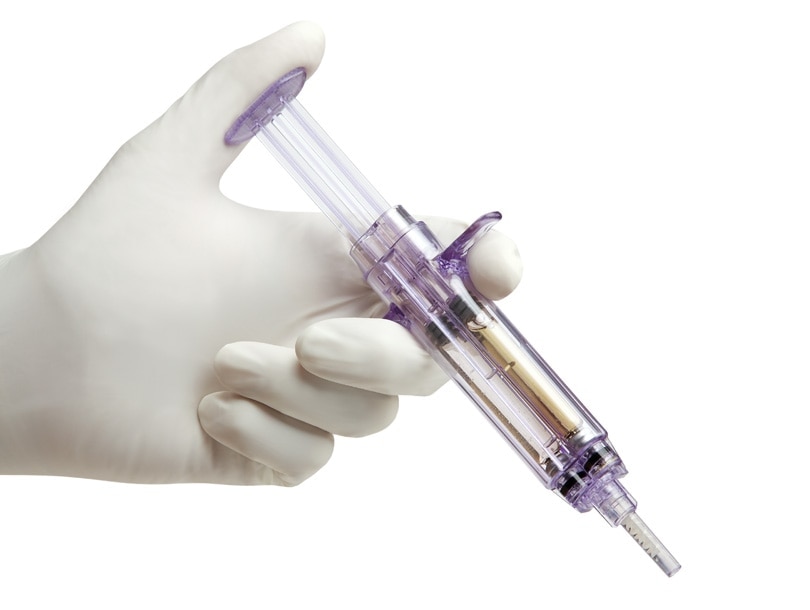1. Allen, Mark S. et al, “Prospective Randomized Study Evaluating a Biodegradable Polymeric Sealant for Sealing Intraoperative Air Leaks That Occur During Pulmonary Resection” Annals of Thoracic Surgery 2004; 77:1792-1801. Pivotal study. Data on file.
2. Progel™ Platinum Instructions for Use. M-00443. Davol Inc. Data on file.
3. Davol Inc. In Vitro Bench Testing. Data on File. In vitro test results may not correlate to clinical performance.
4. Brunelli et al. Predictors of prolonged air leak after pulmonary lobectomy. Ann Thorac Surg 2004; 77: 1205-1210. Based on the reported incidence of prolonged postoperative air leak.
5. Okereke, I, Murthy, SC, Alster, JM, Blackstone, EH, Rice, TW. Characterization and Importance of Air Leak After Lobectomy. Ann Thorac Surg 2005;79:1167-1173.
6. Estimated based on 4Q 2014 sales data and an estimate of 1.2 mL kits per procedure.
Intended Use / Indications For Use
Progel™ Platinum is a single use device intended for application to visceral pleura after standard visceral pleural closure with, for example, sutures or staples, of visible air leaks incurred during resection of lung parenchyma.
Contraindications
Do not use Progel™ PALS in patients who have a history of an allergic reaction to Human Serum Albumin or other device components.
Do not use Progel™ PALS in patients who may have insufficient renal capacity for clearance of the Progel™ PALS polyethylene glycol load.
Do not apply Progel™ PALS on open or closed defects of main stem or lobar bronchi due to a possible increase in the incidence of broncho-pleural fistulae, including patients undergoing pneumonectomy, any sleeve resection or bronchoplasty.
Warnings
Do not apply Progel™ PALS on oxidized regenerated cellulose, absorbable gelatin sponges or any other surface other than visceral pleura as adherence and intended outcome may be compromised.
Precautions
The safety and effectiveness of Progel™ PALS has not been established in patients with the following conditions:
- Less than 18 years of age, pregnant or nursing women.
- Contaminated or dirty pulmonary resection cases.
- The presence of an active infection.
- In the presence of other sealants, hemostatic devices or products other than sutures and staples used in standard visceral pleural closure.
- Visceral pleural air leak due to spontaneous pneumothorax, any non-resective pulmonary tissue trauma, or malignancy as well as congenital or acquired functional or anatomic defect.
- Patients receiving Progel™ PALS in more than one application session (surgery) before and/or after resorption of Progel™ PALS that was applied in any previous surgical session.
- In any area or tissue other than the visceral pleural surface as indicated.
FEV1 ≤ 40% due to small sample size in the clinical study. In the original pivotal study, all 5 Progel™ PALS and 4 Control patients with FEV1 ≤ 40% had post-operative air leak (POAL); whereas in patients with FEV1 > 40%, 59/93 (63.4%) Progel™ PALS. and 45/53 (84.9%) Control patients had POAL. See Section 7.9 Effectiveness: Primary Effectiveness Outcome in the Instructions for Use.
Adverse Events
In a pivotal clinical trial there were 3 subjects in the Progel™ PALS group with AEs that were considered by the investigator to be possibly or probably related to the device. The AEs reported were: chest pain, constipation, gastroesophageal reflux, nausea, cough, dyspnea, pneumothorax, and subcutaneous emphysema. All were reported as a single occurrence in the Progel™ PALS group. Two of the AEs, dyspnea and chest pain, were reported as “severe” and “serious,” respectively and occurred in the same subject. All others were reported as mild or moderate. In a clinical trial there were reports of renal dysfunction, urinary system disorders and deaths within the study population. None of these have been confirmed to be associated with Progel™ PALS.
In a subsequent minimally invasive clinical trial there were no device related adverse events or unanticipated adverse events. The majority of AEs reported in this study were mild or moderate in severity. The majority of SAEs were pulmonary and expected events as part of a lung resection surgery. Two patients died during the course of the study, one due to cardiac arrest and another due to multi-system organ failure; neither were device related or unanticipated.
The details of these clinical trial adverse events can be reviewed in the IFU supplied with the product an d also available at www.bd.com
Caution: Federal (USA) law restricts this device to sale by or on order of a licensed physician or properly licensed practitioner.

